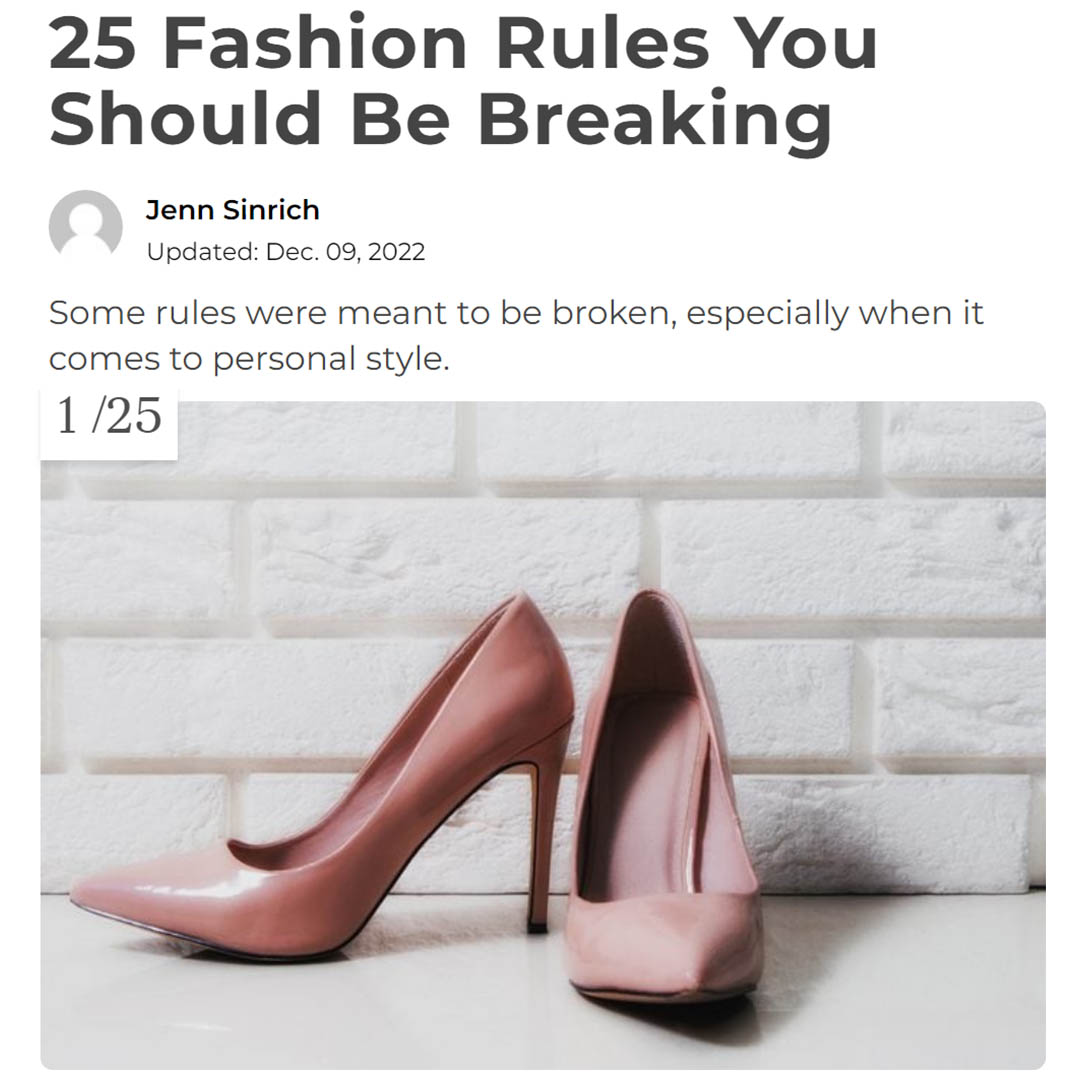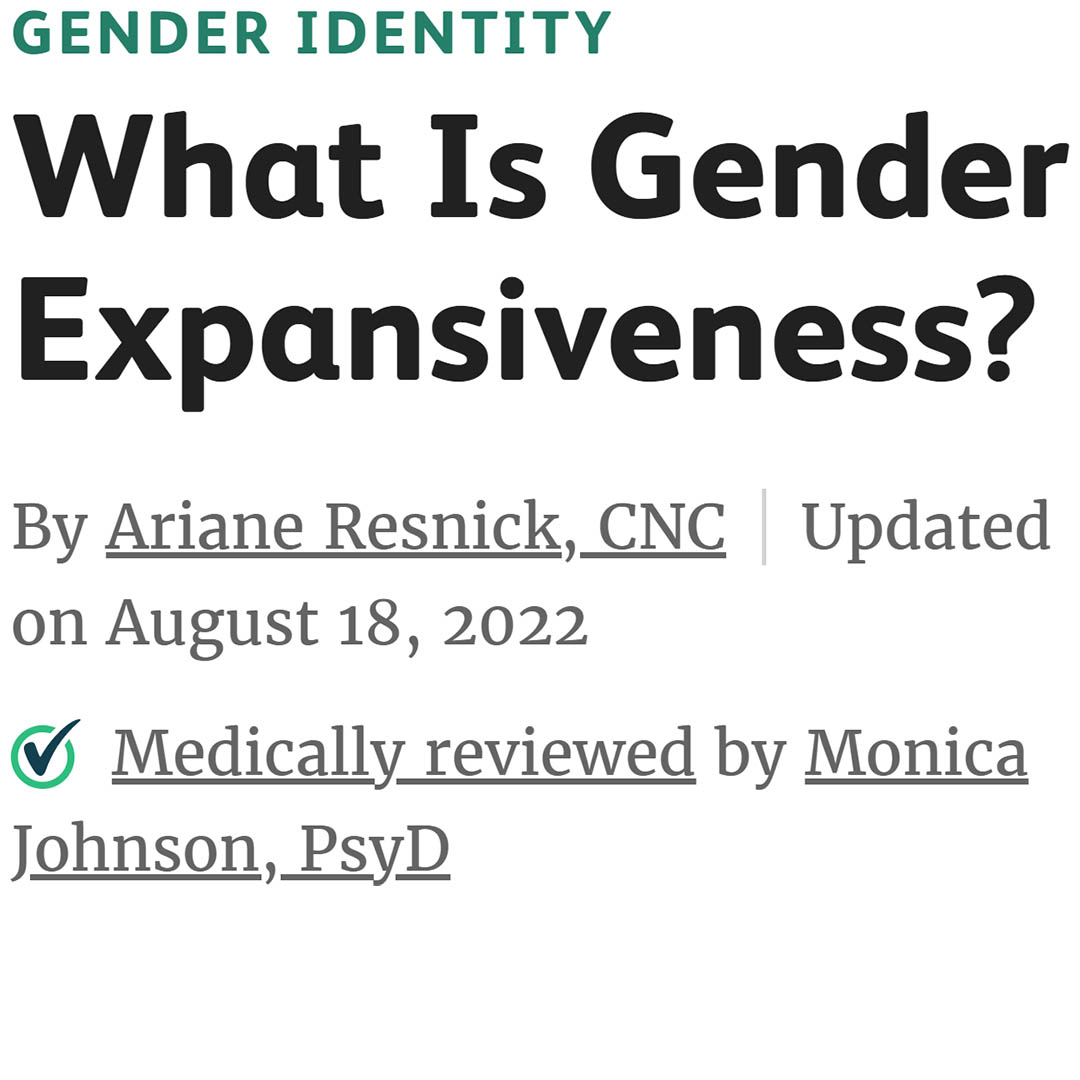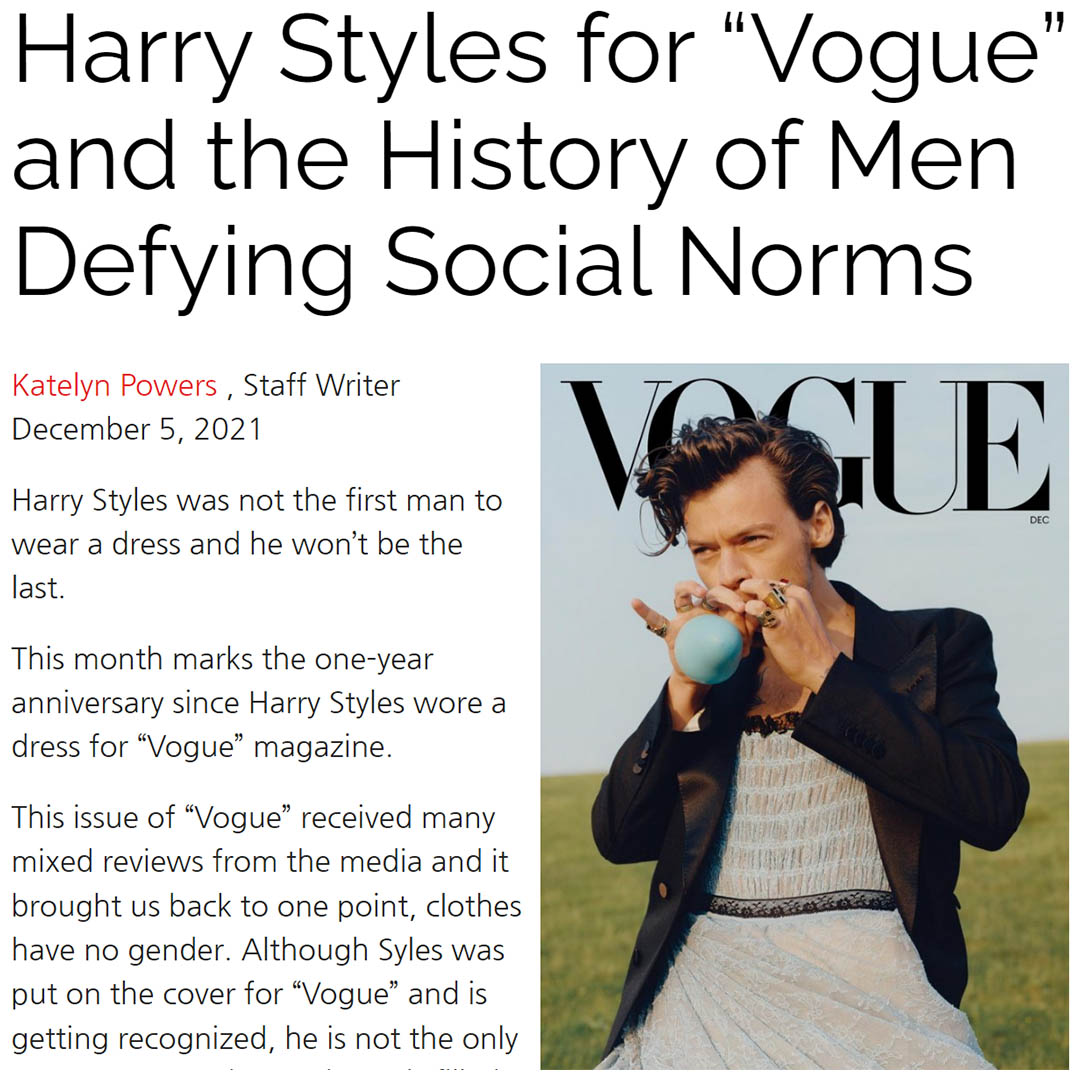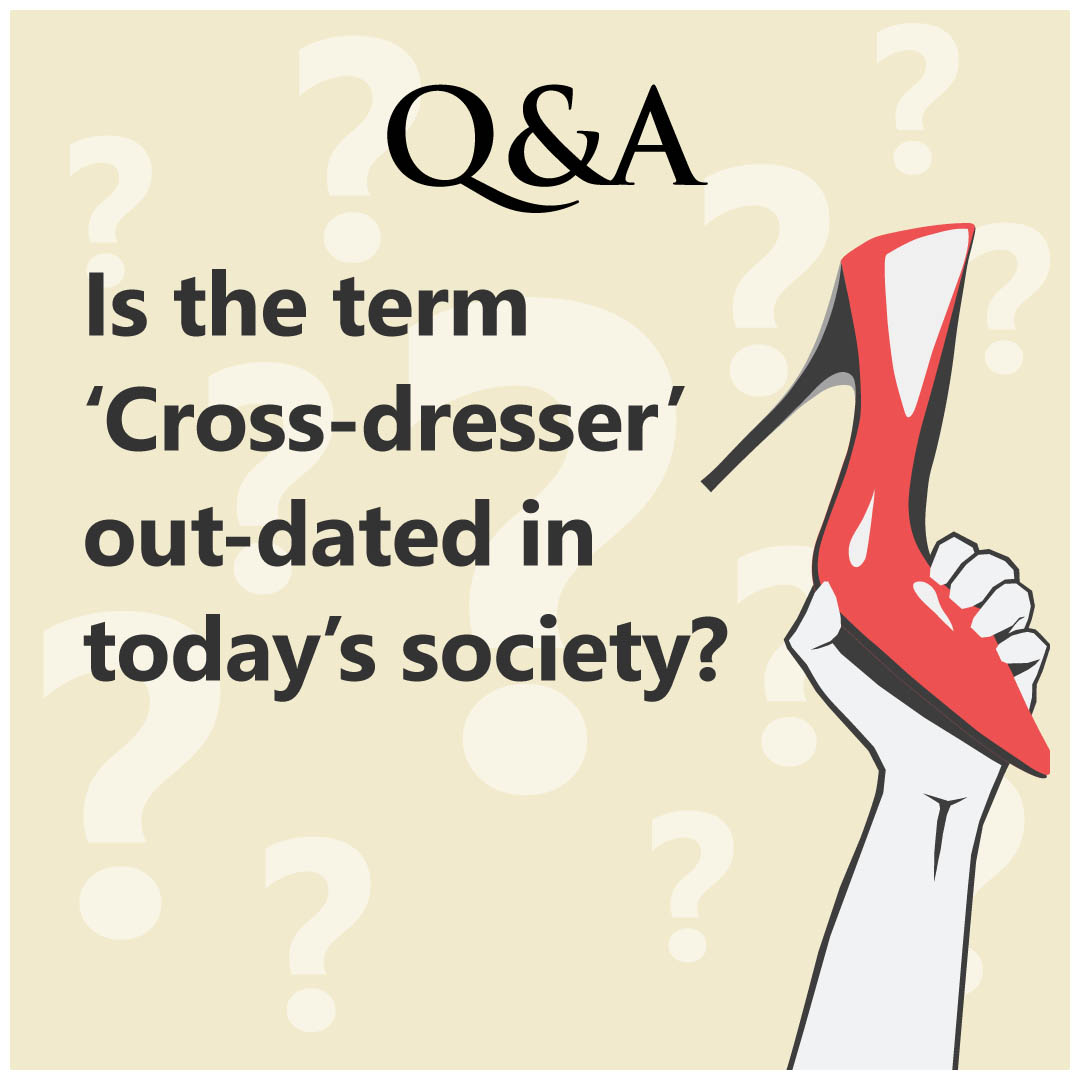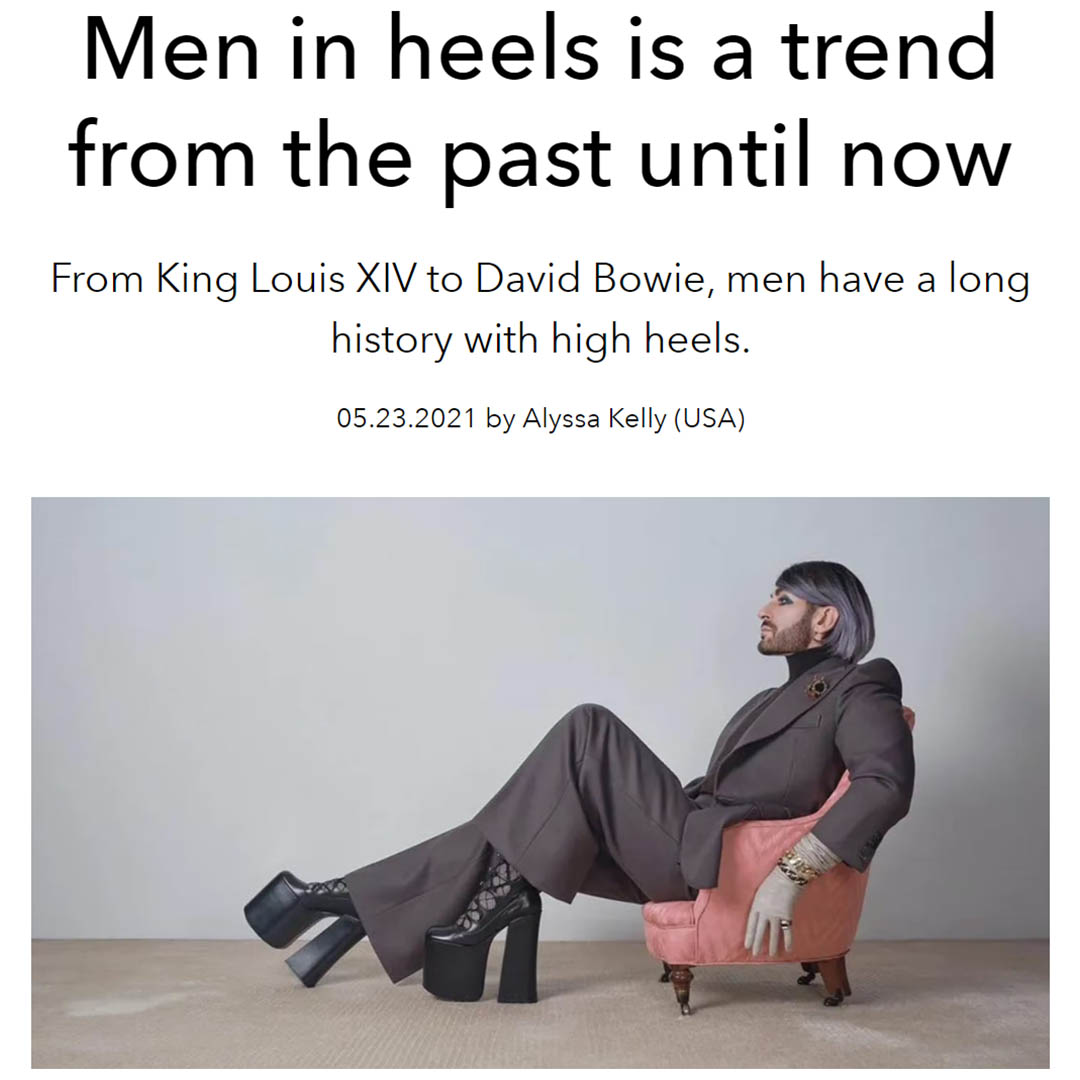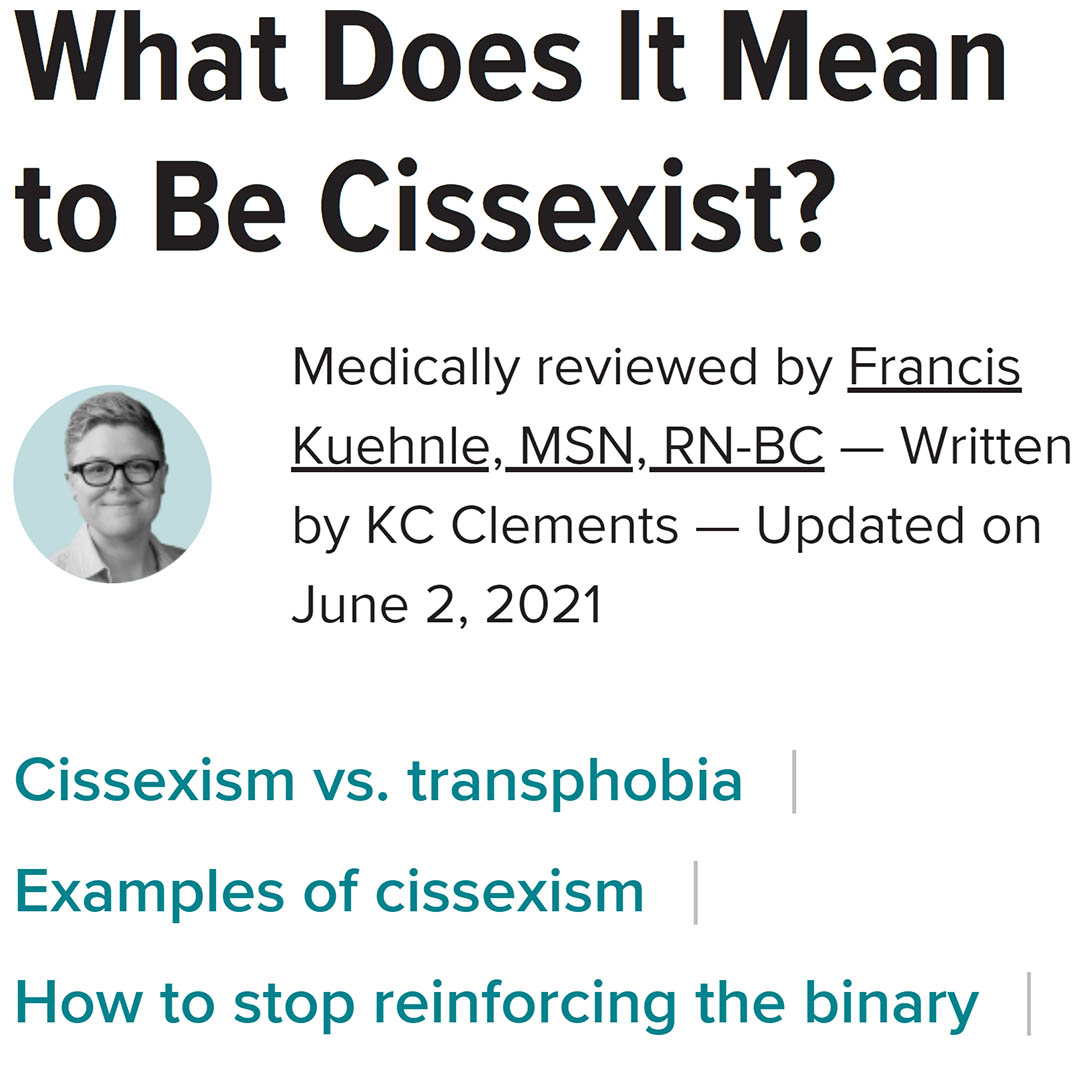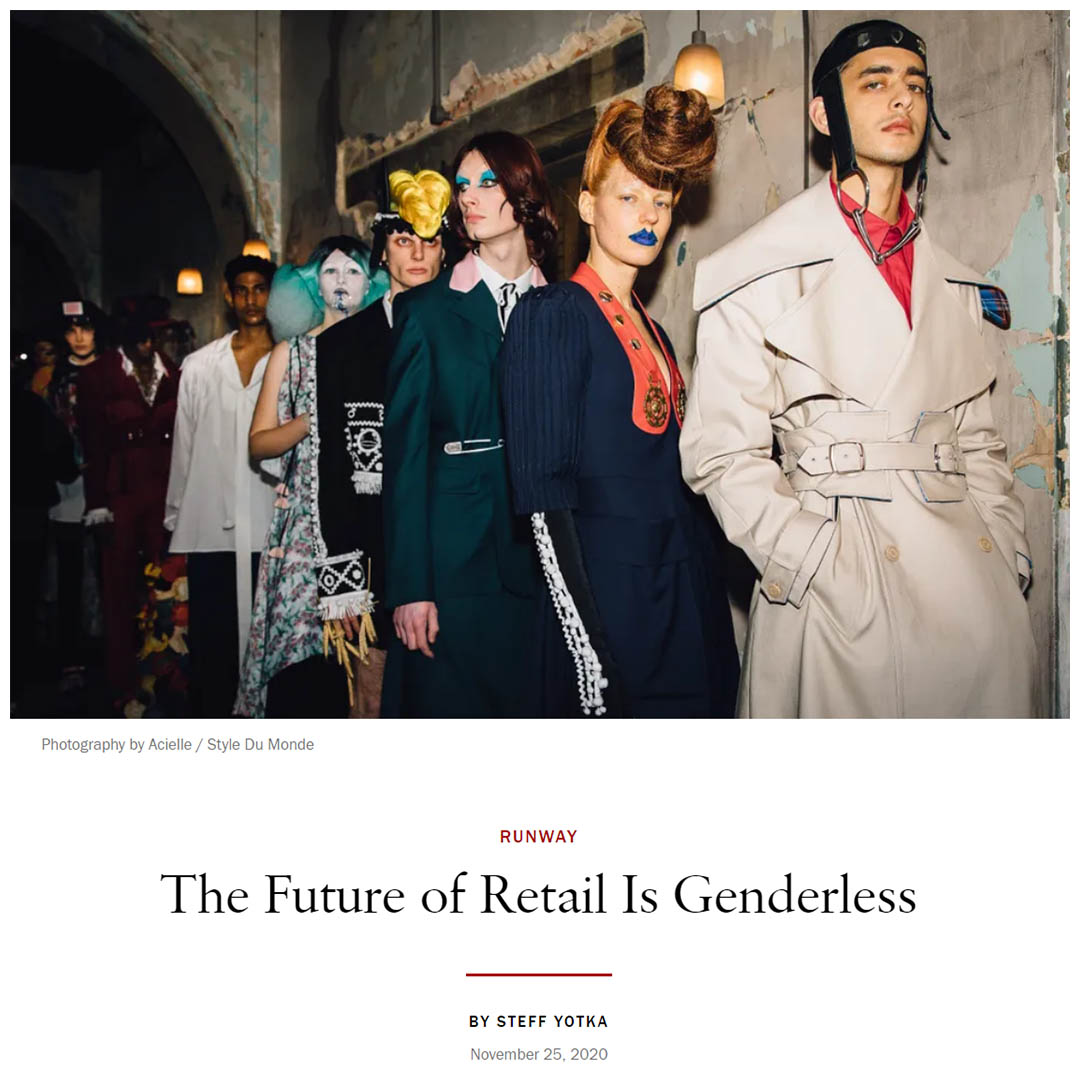Articles tagged with "Clothing"
This Readers Digest article urges women to break 25 fashion rules, and yes, it was written for women, though as men we can (and should) always take notice of what women are saying, especially when it comes to fashion. The "rules" in fashion are many, but shouldn't ever be regarded as strict rules, think of them more as guidelines and you'll have a better time navigating the complex world of social dressing, and don't be afraid to do your own thing.
From the article:
“Anyone who tells you that women of a certain age can’t wear certain things probably isn’t comfortable with how they are aging,”
"Confidence is key when it comes to how you dress, so if you’re not comfortable in a certain piece of clothing, you shouldn’t wear it. “Our body shapes are unique and learning how to dress them confidently is one key to an excellent personal style,” says Russo. “You have to have an understanding of what works for you and what you feel great in.” In other words, if you feel good in something, you should wear it—and rock it!"
"Women and men shouldn’t limit themselves to the department associated with their gender. “If you’re a woman, shopping the men’s department will give you so many more options—it’s one of my favorite style secrets,” says Jenny Applegate, a Chicago-based stylist. “Mixing men’s hats, jewelry, bags, and clothing in with feminine pieces creates fun looks.”"
Original URL: https://www.rd.com/list/fashion-rules-you-can-break/
Posted: 11 April 2023
Very Well Mind website explores the term "gender expansiveness", looking at its origins, what it means and how it's being used to classify people who cross normal lines of gender expression.
From the article:
"Gender expansiveness is an umbrella term for any expression of gender that falls outside of society's current gender binary standards."
"One person who has made a name for himself just by wearing clothing meant for the opposite gender is Eli Cohen, an author, speaker, fashion advocate, and "self-expression facilitator." He founded an organization called Spacious Human, with the tagline "Experiencing Expansiveness." Cohen is a cisgender man who began wearing dresses and skirts after the age of 50. He now teaches others how to explore their gender and their expressions of it."
"It can be challenging to put yourself out there in a way that makes you appear different than others, and you're opening yourself to judgment just by looking different or noticeable. However, some people feel that it's more important that society sees more than one version of humanity and expression, so they take on that potential judgment."
"Consider doing your research before asking anyone in your life about their gender expression. This saves others from having to perform emotional labor for you. It is considered polite to not ask people questions you could easily find the answers to yourself."
Original URL: https://www.verywellmind.com/what-is-gender-expansiveness-6362960
Posted: 2 December 2022
Livewire, the student new site of Bullitt East High School, explores the history of men defying social norms. Whether it's men in dresses, skirts, heels or other items of clothing normally associated with a different gender. Social norms perpetuate gender stereotypes about clothing. Harry Styles, though not the first, currently has the attention of the media for his gender nonconforming style.
From the article:
"Junior Sophie Boguszewski states her opinion that she doesn’t find anything wrong with it. “I don’t think it’s inappropriate. People used to not want women to wear pants, but now they do. So why can’t men wear dresses,” Boguszewski said.
Not only does this spark the idea of nongender-specific clothing, but it also sparks normalizing “feminine” things for everyone. The former One Direction member and the now solo artist is known for pushing against the social norms of men by painting his nails and wearing pearl necklaces.
Many famous men have paved the way for men in dresses in the past. In 1971, David Bowie was photographed wearing a dress while lounging around his house. Bowie has worn dresses on many occasions, including for one of his album covers."
Original URL: https://www.belivewire.com/8353/national/harry-styles-for-vogue-and-the-history-of-men-defying-social-norms/
Posted: 19 October 2022
Is the term ‘Cross-dresser’ out-dated in today’s society?
Before we can answer that question, some definitions may be useful.
Cross-dressing: is the act of wearing items of clothing not commonly associated with one's sex. Cross-dressing has been used for purposes of disguise, comfort, comedy, and self-expression in modern times and throughout history.
Almost every human society throughout history has had expected norms for each gender relating to style, colour, or type of clothing they are expected to wear, and likewise most societies have had a set of guidelines, views or even laws defining what type of clothing is appropriate for each gender.
The term "cross-dressing" refers to an action or a behaviour, without attributing or implying any specific causes or motives for that behaviour. Cross-dressing is not synonymous with being transgender.
Another term for cross-dressing is Transvestitism. Someone who engages in Cross-dressing/Transvestitism is called a Cross-dresser(CD)/Transvestite(TV), although the term Transvestite is now commonly considered outdated and disrespectful. The term Transvestite (often shortened to the slang term "Tranny") was historically used as a slur against people who wore clothes of the opposite sex. Cross-dresser is now a much more accepted term. Cross-dresser was coined by the transgender community.
MtF and FtM Cross-dresser: A man who dresses in women's clothing is a male to female (MtF) cross-dresser. a woman who dressing in men's clothing is a female to male (FtM) cross-dresser. For women, the term is seldom used and the wearing of trousers/pants/men's shirts is often discounted as cross-dressing. This is because in our current society, male clothing is often considered gender-neutral. Therefore when someone uses the term "cross-dresser", the focus shifts mainly towards a MtF cross-dresser.
With those definitions made, two additional points are important to recognise:
a). Cross-dressing as it relates to Transgender: Wearing clothes intended for the opposite sex does not mean that the person identifies as the opposite sex. It is different from being Transgender or Transsexual. When transgender people dress according to their gender identity it is not necessarily the same as cross-dressing.
It is important to know that a cross-dresser does not necessarily have body or gender dysphoria (gender dysphoria means feeling uncomfortable with their body and gender they were born with), they are perfectly happy with their gender assigned at birth and have no desire to change their sex, but simply enjoy being able to cross-dress from time to time. However, Transgender describes people who feel that their gender identity is different from their biological sex.
Most transgender people do not appreciate being called cross-dressers, and for good reason. As they are wearing clothes of their own gender identity they consider themselves, and should be considered by others as the gender they are dressing in. A Transgender woman wearing women's clothes is not a cross-dresser, nor is she a drag queen. She is just a woman. Similarly, a Transgender man, wearing men's clothes is not a cross-dresser, nor is he a drag king. He is just a man.
b). Cross-dressing as it relates to Drag: A cross-dresser should not be confused with drag queens/kings. Drag is a special form of performance art based on the act of cross-dressing. Drag queens are usually male performance artists who dress in female character. Drag Kings are mostly female performance artists who dress in male character.
Now, to get down to answering the question...
As gender refers to the socially constructed roles, behaviours, expressions and identities of girls, women, boys, men, and gender diverse people we can deconstruct that concept. While the term Cross-dresser works well for some people, as it has for years, for many others they do not feel that it works well for them. For non-binary or agender people (who don't identify with the gender binary of male & female) who want to wear certain clothes as part of their gender expression, feel that the term is obstructive and often offensive towards them. With the realisation that clothes have no gender, a skirt or a pair of trousers are essentially just coloured and textured fabric cut and sewn into a garment. The clothes know nothing of gender other than that assigned to them by their creator. The same, of course applies to shoes - high heels are not women's shoes... they are just high heels.
A growing number of people believe that today's socially constructed gender stereotypes don't serve us well in enabling fully inclusive gender expression that recognises our diversity. With the central fact that gender is a social construct, gender labelling of clothing is also a therefore also social construct and can equally be challenged and deconstructed. Gender labelling of clothing perpetuates the construct, but in more recent years this is slowly changing with manufacturers and retailers removing, or neutralising gender labelling on clothes and on signage in stores.
Manufacturers and retailers, now too numerous to mention, are also making items of clothing more traditionally intended for a single sex for both sexes, while recognising that the key differentiator is not actually our biological sex, but our body shape. Does the term cross-dresser still stand up when the clothes have no gender labels? Maybe not.
All clothing, of whatever shape, colour, texture or style has been worn by both sexes as normal daily wear at some point in history, so why do we have gendered clothing now? Visual communication is one of the many reasons we dress the way we do. Our gender identity is expressed visually through what we wear, as can be our social status or rank within an organisation. Sometimes our visual appearance, what we wear, make-up, hairstyle, skin colour, whether rightly or wrongly, can trigger others around us through our learned and often habituated social conditioning to make a judgement on how they should interact with us. Aside from organisational ranking, we should not treat people differently because of their appearance. Everyone is born equal and should be treated as such. Does what they wear really matter more than their actions and achievements as a person?
In conclusion, the term Cross-dresser is fine for a socially constructed world in which there is a gender binary, but it does not work well in a non-binary world where gender is expressed on a spectrum and where many believe that clothing has no gender to start with. When it comes to the use of the term today, if the logic used to describe a man in "women's" clothes as a crossdresser does not hold when applied to a woman wearing "men's" clothes - it's not logic, it's sexism.
When clothing has no gender there are no lines to "cross", hence no cross-dressing and why we therefore believe that the term cross-dresser is out-dated and should decline in use.
Posted: 27 July 2022
L’Officiel delves into the history of high heels for men. From Persia to Pop-culture and the current trend of men wearing heels they present a brief explaination of the origins of the Man Heel.
Original URL: https://www.lofficielmalaysia.com/hommes/men-in-heels-is-a-trend-from-the-past-until-now
Posted: 7 May 2022
Cissexism: "The belief or assumption that cis people’s gender identities, expressions, and embodiments are more natural and legitimate than those of trans people." Healthline digs deeper into this topic which many may not even know exists.
Original URL: https://www.healthline.com/health/transgender/cissexist
Posted: 16 April 2022
Vogue magazine examines the retail fashion industry and with the statement “A piece of fabric, a textile, or a garment has no gender. This is an undisputable fact!” and the reality of the retail fashion industry divided along binary gender lines, probes what the industry can do to represent the spectrum of gender in a more inclusive and realistic way.
Original URL: https://www.vogue.com/article/the-future-of-retail-is-genderless
Posted: 7 August 2021
